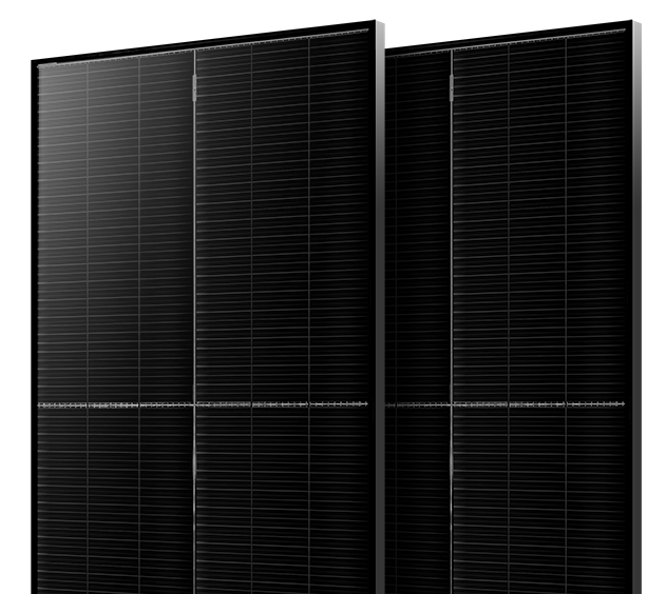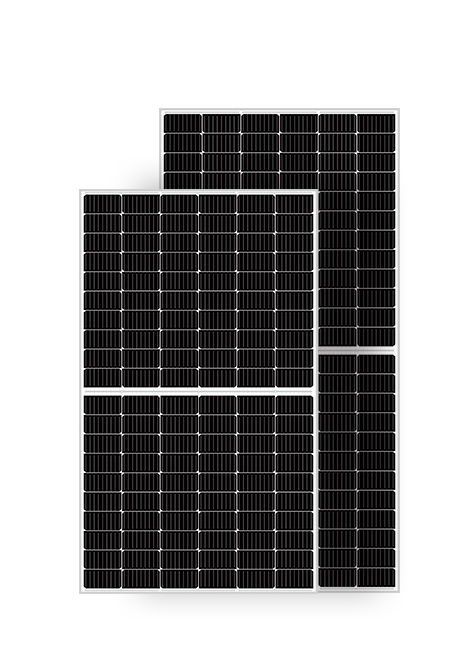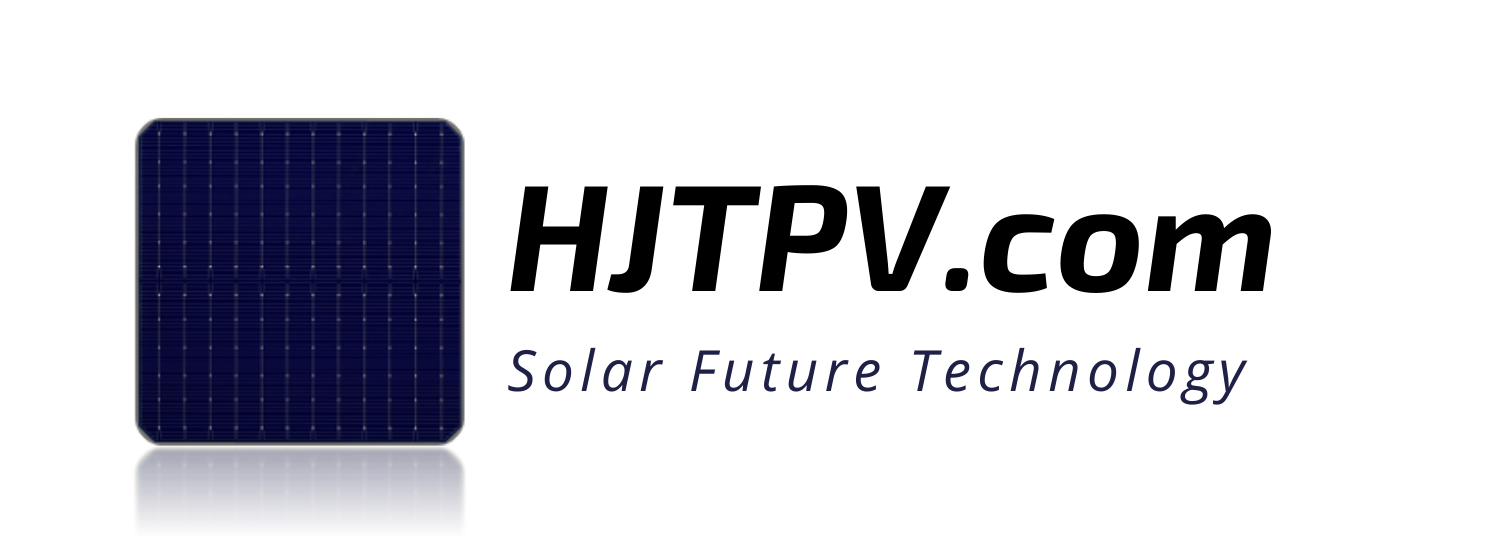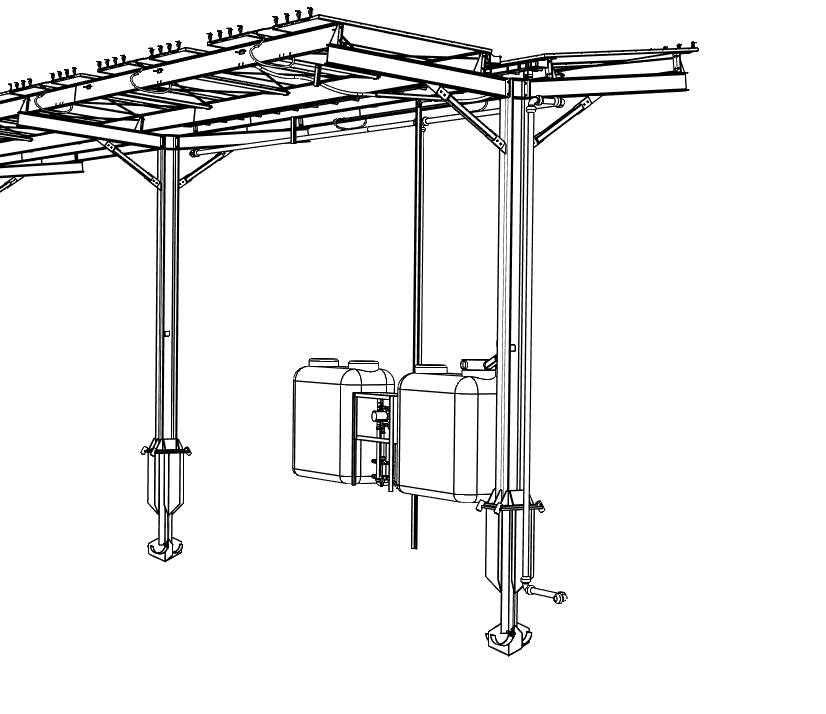

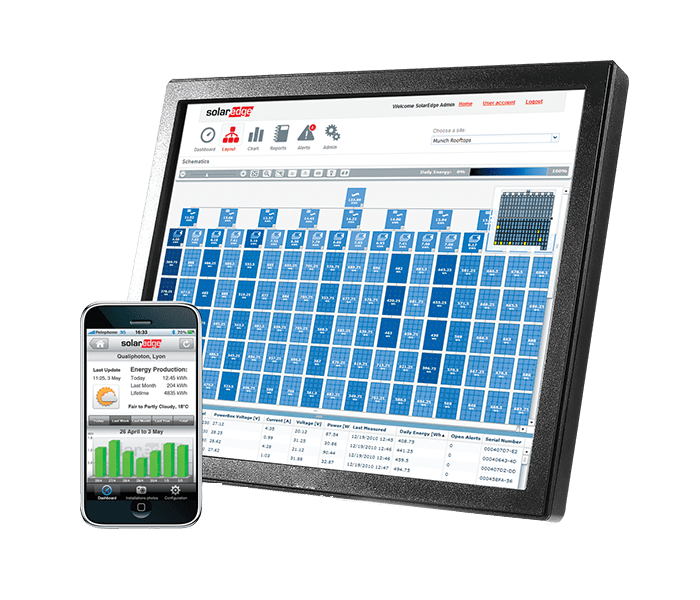
SolarEdge next-generation inverter
SolarEdge Technologies is one of the fastest-growing producers of solar inverters in the world, and currently the third-largest producer of inverters in the world, behind Chinese electronics giants Sungrow, Huawei and Kehua. The Israeli-based company supplies a wide range of utility-scale inverters for residential, commercial and small solar installations, as well as a range of optimizers and smart energy solutions.
Founded in 2006, SolarEdge is unique among inverter suppliers as it does not manufacture conventional string inverters. The company describes its product as “intelligent inverter systems” that use power optimizers to maximize energy production at the level of individual panels.
SolarEdge systems have long had a large market share in the US. Sales in Europe have increased rapidly in recent times as both customers and installers are realizing the benefits of monitoring the level of individual panels to reduce the impact of shading and performance issues. Despite the higher initial costs and additional complexity, many installers, emphasize the advantages of optimized systems.
How does SolarEdge work?
Traditional photovoltaic inverters convert direct current from one or more strings of panels to alternating current, which, depending on the number of panels and several other factors, gives a wide range of operating voltages. String inverters track the voltage and convert DC to AC at the Maximum Power Point (MPP) of the entire string. This usually works very well, unless there is partial shading, dirty cells, problems with one or more of the panels, resulting in a reduction in the power of the entire string.
SolarEdge inverters, on the other hand, operate at a very specific voltage point (typically 380V), using DC power optimizers connected to each solar panel. Optimizers work much like a maximum power point tracker (MPPT) and can increase or decrease the panel voltage to deliver the required voltage to the inverter. If several panels are shaded or have low performance, resulting in low voltage or current, other panel optimizers can compensate (up to a certain point) for the poor panel performance and provide optimal string voltage.
SolarEdge Optimizers are in effect DC to DC converters that work together to deliver the optimal string voltage to the inverter for maximum power.
Of course, the SolarEdge system has some limitations. For example, if many panels are shaded or underperforming, the optimizers can compensate for certain values (because they have a limited range) before overall system performance is degraded. It should also be added that the power optimizers cannot generate extra power in bad weather or when most panels are dirty or shaded.

SolarEdge DC Power Optimizers
Optimizers along with microinverters are generally known in the industry as MLPE or Module Level Power Electronics which, as the name suggests, consists of electronic power conversion units connected directly to individual solar panels. MLPEs offer a number of benefits including:
– power optimization to ensure that each panel reaches its peak output power,
– panel-level monitoring to provide real-time power generation data from each panel in the solar system,
– highlighting and assessing problems with solar modules with incomplete efficiency.
Due to the wide range of different PV panels on the market with different power ratings (250 to 700W) and different operating voltages, SolarEdge has produced a wide range of optimizers specifically designed for many different panel types and configurations.
The SolarEdge system monitoring platform enables the tracking and monitoring of every panel in the system. The example below shows a 23% difference between the panel with the highest and lowest performance. While this roof appears to fit a regular series inverter (since all panels are in the same orientation), without solar optimizers a few panels with weaker performance would normally reduce overall performance. This is one of the benefits of panel-level monitoring and DC power optimizers.
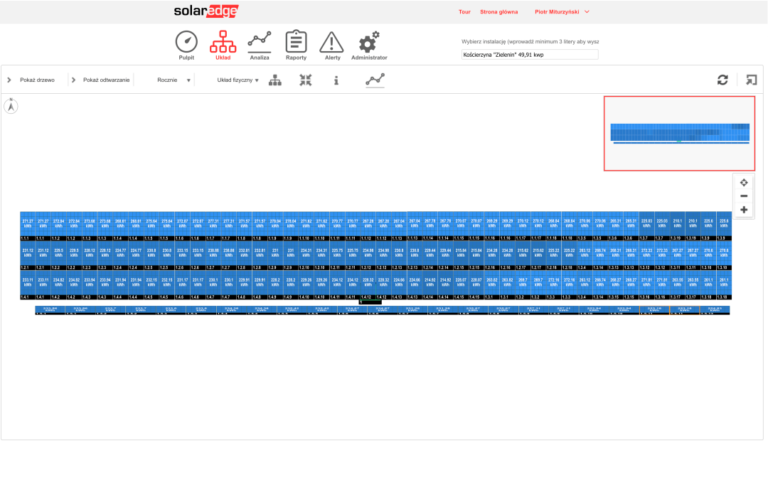
Advantages of power optimizers
Shading is one of the most common problems with standard string inverters and rooftop PV installations. However, with an optimized system, if one or more panels are even partially shaded, the optimizers skip or compensate for the shaded panel/panels without affecting the performance of other PV modules in the string.
Besides the shading, there are many other reasons (listed below) why individual panels or strings may perform worse or reduce the efficiency of your PV plant. Even minor problems can become big over time as your PV systems age. There may be “hot spots”, ie weaker generation spots due to the degradation of individual cells at different rates. Various rates of panel degradation (typically 1-2% in the first year and 0.4% annually after) can cause a 5-6% mismatch over the lifetime of the system.
Factors of degradation of a photovoltaic installation
The following are the main factors that can reduce system performance in old or newly installed solar systems:
– Shading – trees, buildings, poles, wires, antennas or roof structures (CIGS technology is one of the best solutions for shading or half-cut like Jinergy and AKCOME).
– Panel mismatch – manufacturing tolerances (HJT modules manufacturer are in top positions with best panels matching in factory lines)
– Panel damage – microcracks, Hot Spots or water ingress (CIGS and HJT are the best solutions to avoid this kind of damage)
– Temperature difference – thermal mismatch at different times of the day (N-type solar cells helps avoid this effects)
– Dirt – dust, snow, bird droppings or dust (modules made of graphene, e.g. ZnShine, are also good at it)
– PID – potential problems with voltage and leakage current (zero LID and PID in HJT solar panels is one of the main advantage heterojunction technology)
PID problems in PV modules
PID problems in particular can be very difficult to assess without the use of expensive specialized equipment. The SolarEdge system, with the help of monitoring the level of individual panels, makes it much easier to identify problems related to potential degradation induced as they develop.

Additional benefits of the optimizer
The SolarEdge system offers PV installers the added benefit of flexibility in design layouts. One important benefit is that when it comes to replacing old or defective panels in systems, it is often very difficult to find a panel of the same size or model. Optimizers overcome this problem because they can run on modules of many sizes and models on the same chain. For example, you can replace an old 260W panel that is no longer available with a 400W panel and each panel will still run at maximum power.
SolarEdge Optimizers Installation Solutions
- Multiple module orientations on one chain.
- Various panels on one string – ideal for retrofitting old systems.
- Maximize Roof Space – Winter shading is less of a problem.
- Possible installation of parallel chains of panels of different lengths.
- Monitoring at the level of an individual panel, strings and inverter.
- Remote troubleshooting through the monitoring portal.
- Best Match with bifacial panels.
- Compatible with glass-glass hjt modules.
SolarEdge -safety?
In addition to monitoring individual panel levels and optimizing power, SolarEdge optimizers offer a big safety benefit by reducing the DC cable voltage to 1V per panel in the event of a grid or PV inverter outage. Solar panel strings can be dangerous (during the day) as the DC voltage is typically 300-600V, which can be dangerous in a fire or emergency.
High DC strand voltages combined with damaged connectors, defective insulators, water ingress or corrosion can potentially lead to an arc fault causing severe damage to the panels or worst case fire on the roof. SolarEdge inverters also include a built-in fault detection function (UL1699B) to reduce the risk of an electric arc.
Increased safety – During installation and commissioning, the voltage is reduced to a safe level with the DC voltage corresponding to the number of panels in the string before turning on the inverter. it means. 12 panels = 12V DC.
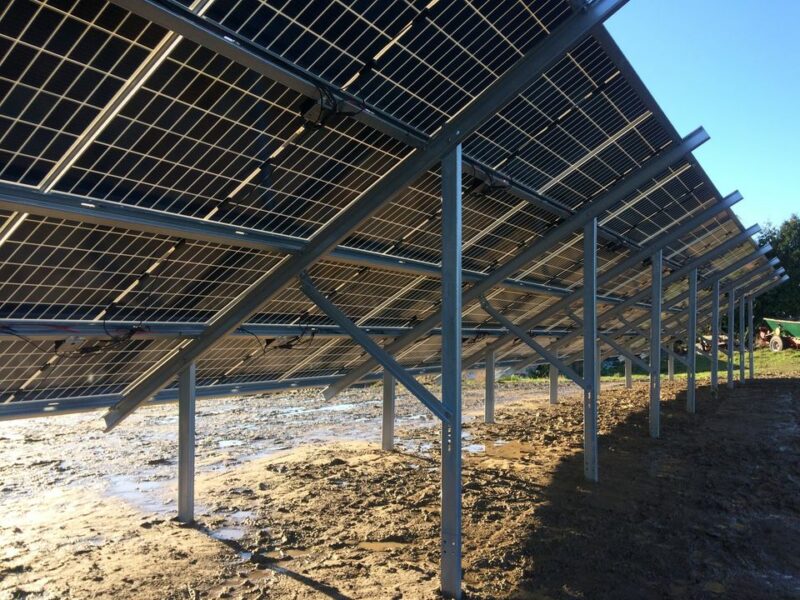
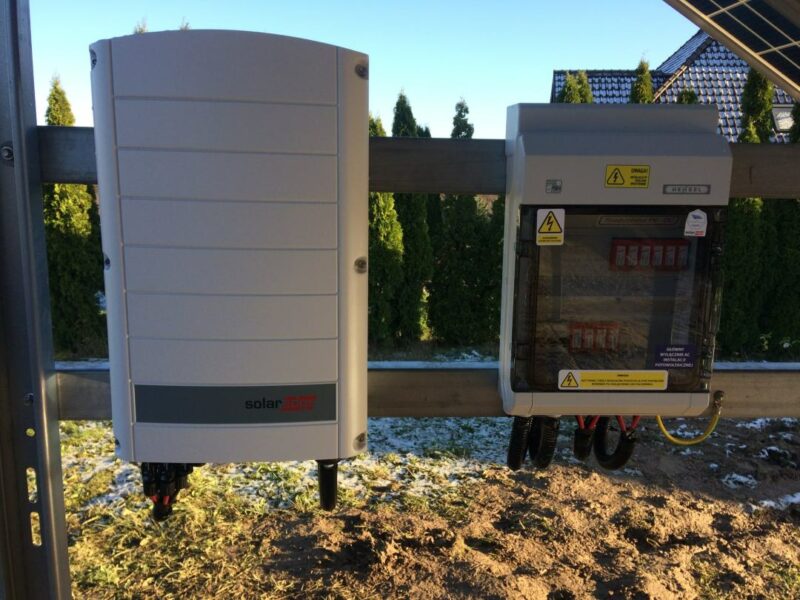
SolarEdge Monitoring System
Like most solar inverters on the market, SolarEdge offers a free cloud system monitoring portal that provides monitoring of solar energy generation and consumption. However, unlike most others, the SolarEdge portal can also offer detailed panel-level monitoring (provided it is enabled) as well as a set of smart home control features that can be used to control home appliances and specific loads with additional smart energy products SolarEdge.
SolarEdge Designer, the best system for plant design?
SolarEdge offers a range of free tools to assist installers and designers in setting up and designing SolarEdge systems. The SolarEdge Designer helps ensure that the correct optimizers and inverters are used to work with the selected solar modules. This tool also helps you create accurate solar yield estimates to make sure your system is meeting customer requirements.
Summary – is it worth choosing SolarEdge?
SolarEdge inverters and optimizers will slightly improve performance compared to regular string inverters, but more importantly, the SolarEdge system offers many advantages in terms of optimizing and monitoring the power of individual panels. However, for smaller systems with less than 7-8 modules, or sites with severe shading problems, the SolarEdge system is generally not compatible. Three-phase housing estates can also be problematic.
While the initial setup time and installation cost are slightly higher, the SolarEdge system offers a wide range of benefits including better shadow tolerance, simplicity in finding/replacing defective panels, PID detection, and panel-level optimization and monitoring. Additional safety benefits and a quick shutdown function provide customers with peace of mind and reduce risk to installers.
The low failure rate, 12-year inverter warranty and 25-year optimizer warranty make it easy to understand why optimized SolarEdge systems are gaining popularity around the world.
When we add to this advantage HJT solar panels(AKCOME, Jinergy or Risen) abilities, we can achieve the best solutions for residential installation and small commercial photovoltaic investments.
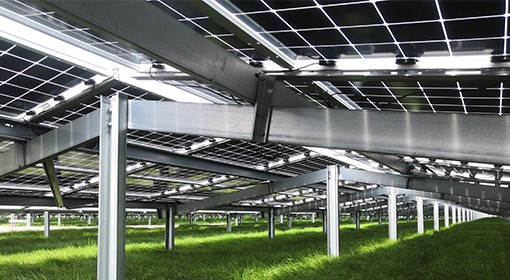
Most Popular

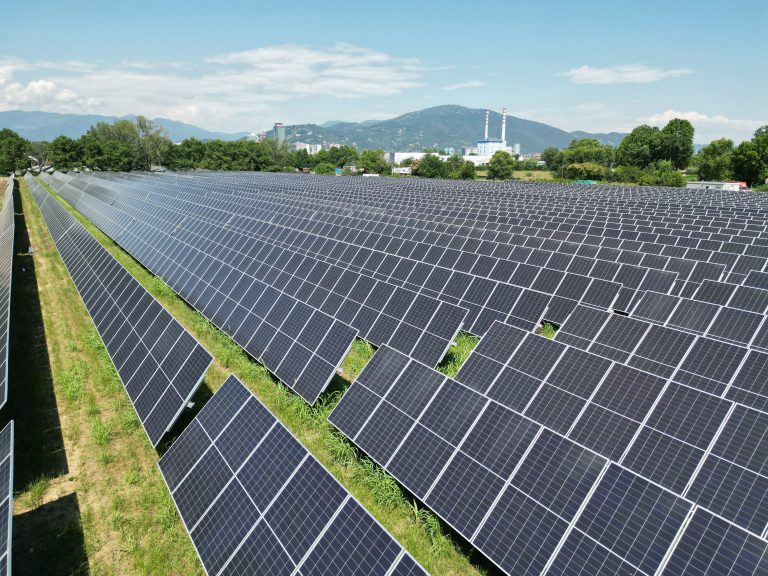

Kapaciteti Srbije za Fotonaponsku (PV) Energiju

Serbia Capabilities for Photovoltaic (PV) Energy
Subscribe To Our Weekly Newsletter
Categories
- HJTPV.com
- HJT Technology
- HJT Producers
- HJT Solar Panels
- HJT Solar Panel Mysolar Gold 740W
- HJT Solar Panel Mysolar Gold 640W
- HJT Solar Panel AEsolar COMET 720W
- HJT Solar Panel AESOLAR COMET 650W
- HJT Solar Panel Bi Chaser Akcome 120 Cells
- HJT Solar Panel HuaSun HS-B120DS
- HJT Solar Panel Jinergy JNHM120 Cells
- HJT Solar Panel Risen Hyper-ion
- HJT Solar Panel QW Solar Giwa5 730W
- HJT Solar Panel QW Solar Giwa5 640W
- HJT Solar Panel Risen RSM120
- Cleaning Robot
- HJT Solar CELLS
- News&Knowledge
- Contact
- HJTPV.com
- HJT Technology
- HJT Producers
- HJT Solar Panels
- HJT Solar Panel Mysolar Gold 740W
- HJT Solar Panel Mysolar Gold 640W
- HJT Solar Panel AEsolar COMET 720W
- HJT Solar Panel AESOLAR COMET 650W
- HJT Solar Panel Bi Chaser Akcome 120 Cells
- HJT Solar Panel HuaSun HS-B120DS
- HJT Solar Panel Jinergy JNHM120 Cells
- HJT Solar Panel Risen Hyper-ion
- HJT Solar Panel QW Solar Giwa5 730W
- HJT Solar Panel QW Solar Giwa5 640W
- HJT Solar Panel Risen RSM120
- Cleaning Robot
- HJT Solar CELLS
- News&Knowledge
- Contact
Related Posts

Maximizing Agrivoltaic Performance with HJT/TOPCon Modules
MySolar a solar panel manufacturer, announced in 2023 that it has launched commercially available HJT + perovskite solar cells with a power output of 250 W. The company was founded in 2013 and has since become one of the leading solar panel manufacturers in Poland. HJT + perovskite cells are a new technology with the potential to revolutionize the solar industry.

Innovative 5MW Solar Farm in Northern Italy: Energy Excellence Meets Sustainable Agriculture
MySolar a solar panel manufacturer, announced in 2023 that it has launched commercially available HJT + perovskite solar cells with a power output of 250 W. The company was founded in 2013 and has since become one of the leading solar panel manufacturers in Poland. HJT + perovskite cells are a new technology with the potential to revolutionize the solar industry.

Kapaciteti Srbije za Fotonaponsku (PV) Energiju
Kapaciteti Srbije za PV Instalacije 1. Obilje pogodnog zemljišta: Srbija ima velike površine zemljišta pogodnog za fotonaponske (PV) instalacije. Topografija zemlje uključuje ravne ravnice, posebno

Serbia Capabilities for Photovoltaic (PV) Energy
Serbian Land Capabilities for PV Installations 1. Abundance of Suitable Land:Serbia has vast expanses of land suitable for photovoltaic (PV) installations. The country’s topography includes

